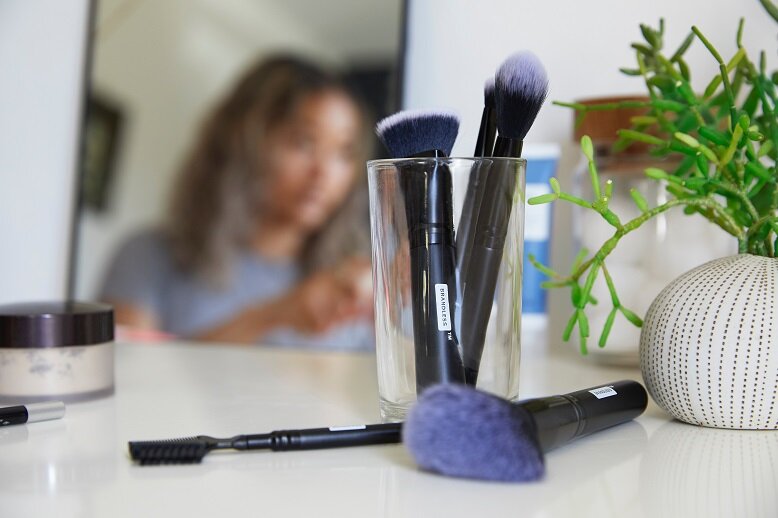YouTube and the Vloggers

YouTube has more than two billion users watching videos on the platform daily.
The Rise of Beauty Vloggers
The Power of Beauty Gurus

Beauty content creators have a mutually beneficial relationship with their viewers. They review according to the needs and requests of the viewers, and in turn, viewers support the content they make.
Inclusivity became more visible in the beauty industry when beauty content creators, most of whom were people of colour, demanded that companies' expand their shade range. Too Faced Cosmetics tapped beauty guru Jackie Aina to help expand their bestselling Born This Way Foundation range. Another beauty content creator, Nyma Tang, has a series where she tries the darkest shade available in a complexion range. As time goes on, beauty vloggers have become the voices and representatives of their audience. Inclusive became an important part of conceptualising and marketing a beauty product because content creators became vocal about it. In turn, this empowered their own viewers to patronise the brands that embody such values.
"Most of the content I create are based on audience requests," shares Star Clozetter Shanthi, known as TheLeiaV in the Community. "Content featuring trending products do tend to have more buzz than non-trending products as it's still pretty much the 'in thing', at the moment. In terms of engagement, content [with trending beauty products] has been noted to have more shares, likes and increased interactions with viewers and potential new followers."
We also spoke with Czari Domingo, Benefit Philippines' National Brow Artist, on her journey from YouTuber to makeup artist. Domingo, who started making makeup tutorials in 2014, shares that YouTube has its pros and cons. "It’s amazing how knowledge is so accessible to anyone these days. I would not be where I am today without YouTube. In many ways it was my first teacher," she says. "I’ll never forget some of the kind comments I’ve received and lives I was so surprised I was able to touch in my own little way all because I was brave enough to post my first makeup tutorial. In contrast, I’ve been so moved and inspired by other beauty YouTubers as well."

Content creators who also work in the beauty industry have a unique perspective of both consumer and developer.
Their Impact On The Beauty Industry

A review video is more likely to get views than an announcement video of a new product.
Research shows that beauty tutorials are vastly more popular than branded content made by cosmetics companies themselves. The hard-sell ad becomes annoying when it pops up before a YouTube video plays. People want to see the product in action before they decide to purchase it. This is why a review video can garner millions of views within days. Convenience, entertainment, and information are contained in one 15-minute video.

Viewers' purchases are informed by the content they watch.
In an interview with Clozette, Yi Wei Lau, a Senior Marketing Executive of Cason Group, Beautyblender’s distributor in Malaysia, shares, “Consumers today refer to [or] rely a lot on the content creators' user experience before they proceed to make their own purchase.” For Lau, the direct one-to-one relationship between the content creator and viewer is invaluable as they act as a “medium to reach out to our potential customers directly [since] the direct communication [has a] significant influence on customers' buying will.” Similar to a friend recommending something for you to try, the relationship between a content creator and viewer is genuine and built on the trust established through time.

"Watch before you buy" seems to be the new motto of loyal beauty content viewers.
Beautyblender is just one of many beauty brands that gained popularity and following after it became a staple in beauty vloggers’ makeup videos. But with raving reviews, it soon became a must-have and deemed “revolutionary” in one’s daily makeup routine. While makeup sponges have always been available, the proven ease of use and hearty recommendations have made the brand’s name synonymous to the tool.
It’s undeniable that beauty content creators have the world at their fingertips. Whether they continue to upload beauty videos while running their own beauty brands (like GlamLifeGuru's Tati Westbrook and Jeffree Star), or choose to leave YouTube behind and pursue a different path (like Michelle Phan), these successful beauty content creators will always have a big impact on the community they’ve built around their content. There’s always makeup to be reviewed, skincare to be tested, and new tools to try. Beauty vloggers are here to stay — hopefully, for the better.
Discover why we think honesty should be valued in a sponsored beauty review.
Comments, questions or feedback? Email us at [email protected].








.jpg)